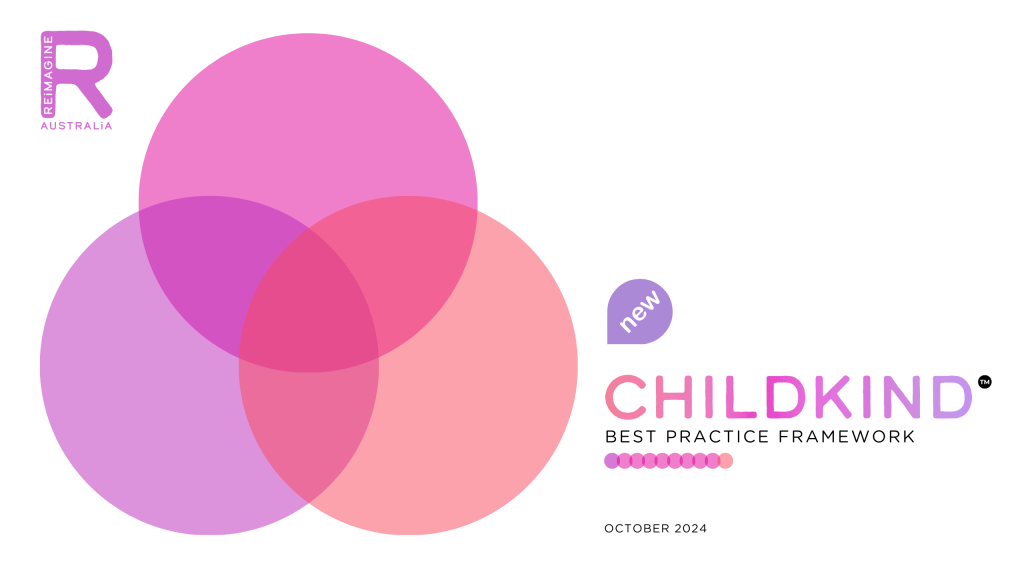CHILDKIND WAY OF WORKING #4

“Customising services and strategies to meet my unique needs, preference.“
Individualise My Supports focuses on tailoring services and strategies to meet the unique needs, preferences, and goals of each child and family, through:
Collaborative Goal Setting: Work alongside children and families to establish clear, achievable goals, to foster engagement and ensure alignment with individual aspirations.
Holistic Understanding: Consider the broader context of a child’s life, including their family dynamics, cultural background and community. By understanding these factors, supports can be more relevant and effective.
Flexible Adaptation: Regularly review and responsively adjust strategies to meet the changing needs of children and families to ensure that supports remain meaningful and impactful.
People with Disability Australia state, “Making adjustments for a child based on the social model of disability considers how physical and social environments, attitudes, and communication channels can be adjusted to enable that child living with impairments to participate in society on an equal basis with others (AERO, 2022, p. 2). If unique needs, preferences and goals are not taken into account when developing goals, it is likely that the supports will be less effective. Individual learning and communication styles for example, will significantly alter the services and strategies that will most meaningful to the child.
Within the literature review conducted to inform Reimagine’s National Best Practice Guidelines 2024, one of the key areas explored related to empathy, collaboration and care. Four sub-themes became evident, and included appropriate services and supports, necessity of parent and carer recognition and involvement and experience of the child, importance of approaches for First Nations and culturally and linguistically diverse (CALD) communities, and building a supportive, and inclusive team with each child. Scope, 2024 identified that with the increased recognition of diversity and inclusivity, there is a growing need for personalised, tailored, support, away from a ‘one-size-fits-all’ provision. In addition, they found that personalised support needs to consider preferences, strengths and aspirations, as well as including holistic support, flexibility, adaptability, cultural competence and diversity.
Individualise My Supports, as a way of working, relates to the ‘design and delivery of services and supports’ phase of the child’s early developmental support journey. This way of working is broken down into 3 Key Competencies. In practice, these competencies might be demonstrated as follows:
Priority and Goal Setting: Working closely with families will ensure that family priorities are the foundation for the development of goals. If family priorities are not considered, goals will be less likely to support the unique needs of the child and their family.
Ecological and Intersectional Approach: A child is usually part of a family, with their own structure, needs, desires and priorities. Families may involve biological and/or non-biological parents, siblings, and extended family members. Each family will have its own cultural identity, living arrangements, financial situation, and support system, as well as many additional variations. To be able to provide appropriate support to a child with a disability, developmental delay and neurodivergence and their family, all aspects of their environment and identity need to be considered.
Adaptive Practice: Not only should supports be tailored to each individual family, they also need to be continually adjusted and adapted to meet the changing needs and priorities of the family. It is important to consider both what families share, and also any changes educators and practitioners observe so support can always be most meaningful to the family at any particular time.

A resource by neurowild that includes a non-exhaustive list of neurodiversity affirming goals that may be relevant for many Autistic/ADHD children, a checklist of questions that can be used to analyse current IEP goals, and 3 pages of specific responses (examples) that parents can give when addressing IEP goals.

Kemp, G., Smith, M. & and Segal, J. (2024). How to help a child with a learning disability – parenting tips for home and school

This practice guide details engagement strategies for families of children with disability. It uses findings from AERO’s family engagement for early learning practice guides.
Australian Education Research Organisation (AERO) (2022). Engaging with families of children with disability to support early learning and development in early childhood education and care (ECEC).

A resource that provides an overview of personalised support services, from SCOPE Australia.
Recognising the intersectionality of identity factors—such as culture, socioeconomic status, and disability—allows for more effective individualised support strategies.
Zhang, D., & McMahon, M. (2015), "Intersectionality in Education: Implications for Practice and Policy.
Access more information on the ChildKind Best Practice Framework with its 10 Ways of Working, 30 Key Competencies and 8 supporting Values and Behaviours here:
